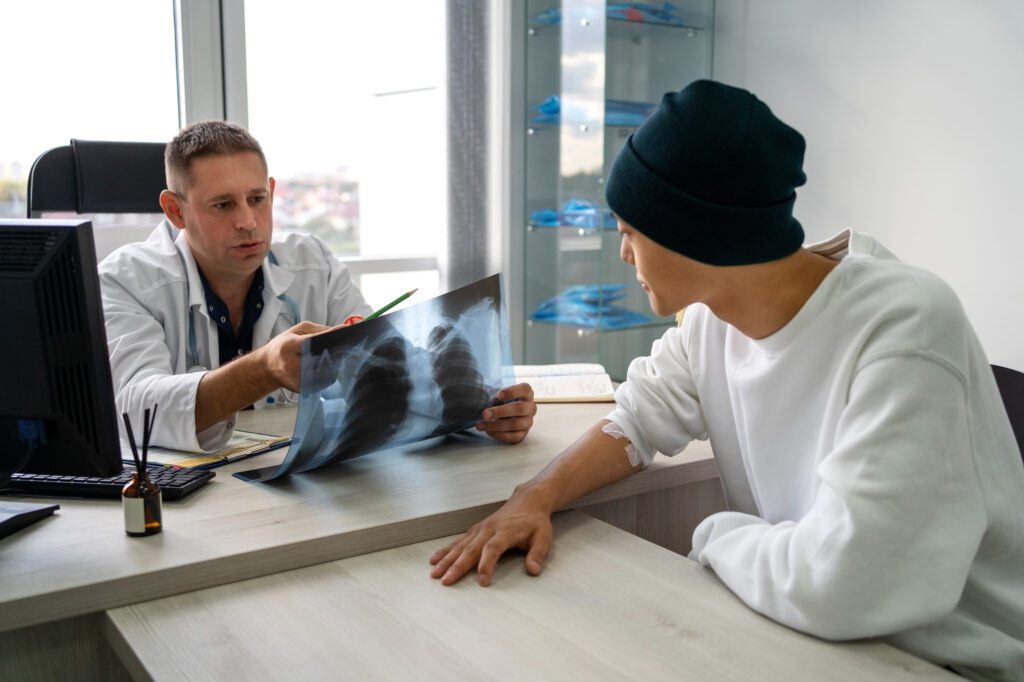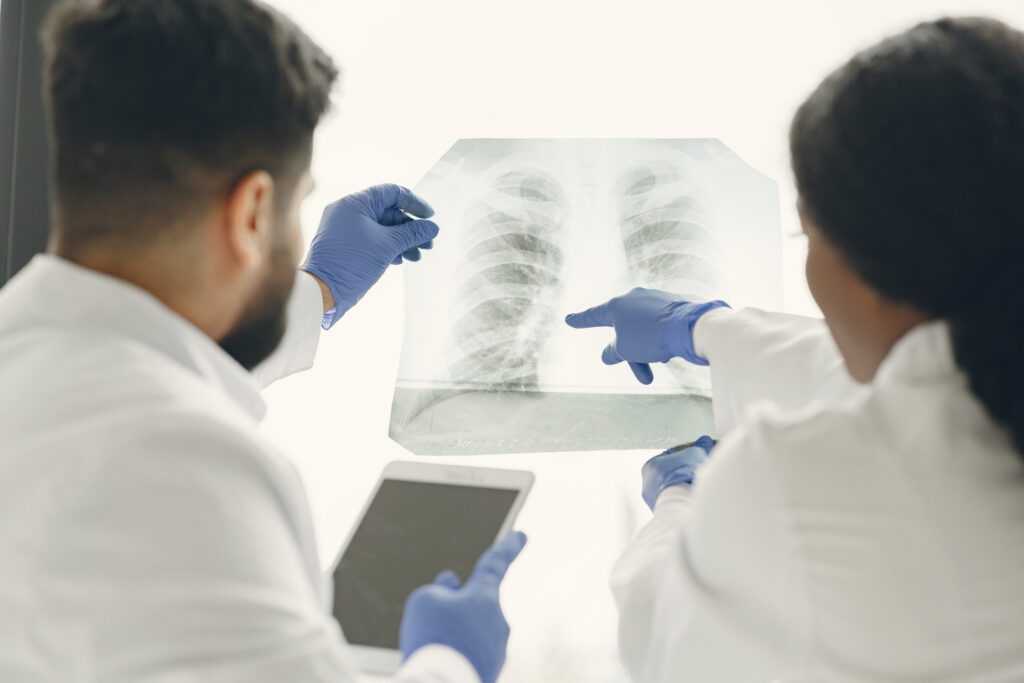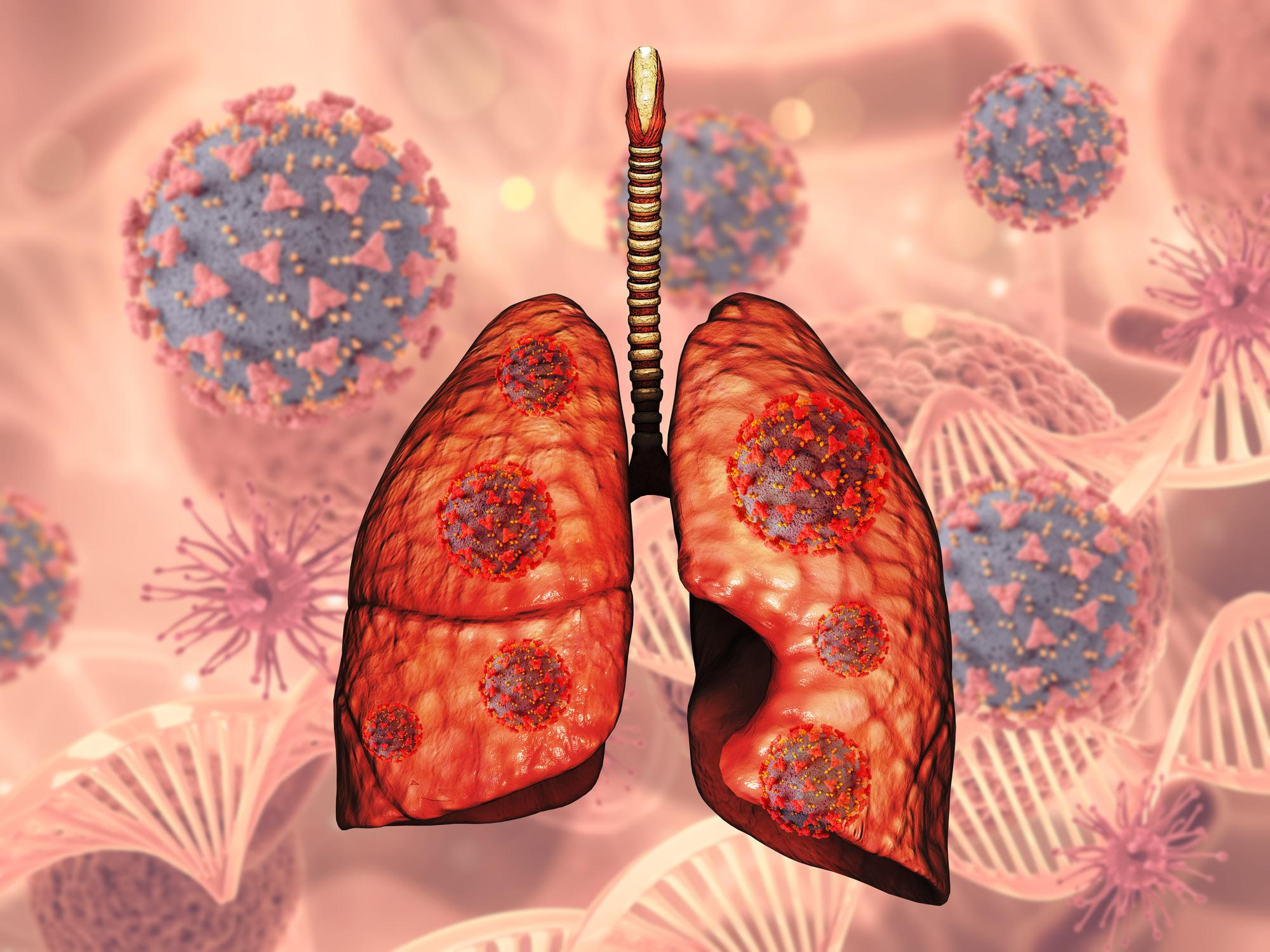Here, we are sharing information on the topic “detailed information on lung cancer.” An illness known as cancer occurs when body cells proliferate uncontrollably. Lung cancer is the term for cancer that originates in the lungs. Lung cancer starts in the lungs and can go to other organs, including the brain or lymph nodes. Lung cancer can potentially spread to other organs. We refer to the spread of cancer cells from one organ to another as metastases.

detailed information on lung cancer
- Generally speaking, there are two primary forms of lung cancer: small cell and non-small cell (non-small cell includes adenocarcinoma and squamous cell carcinoma). These variations in lung cancer growth and treatment are noted. Compared to small-cell lung cancer, non-small-cell lung cancer occurs more frequently. Visit the lung cancer page of the National Cancer Institute for further details.
- First and foremost, lung cancer is mostly caused by cigarette smoking. Other tobacco products (such as pipes or cigars), secondhand smoke inhalation, exposure to radon or asbestos at work or home, certain gene mutations (anomalous alterations produced as your body’s cells divide), and a family history of lung cancer can all be risk factors for lung cancer. Even those who have never smoked or who have smoked fewer than 100 cigarettes in their lifetime may develop lung cancer.
Lung cancer types
Based on how lung cancer cells appear under a microscope, doctors classify lung cancer into two main categories. Depending on the primary form of lung cancer you have, your doctor will decide on your course of therapy.
Lung cancer can be of two general types:
- Lung cancer with small cell: Compared to non-small-cell lung cancer, small-cell lung cancer is less common and virtually exclusively affects heavy smokers.
- lung cancer with non-small cells: A variety of lung cancer forms are grouped together under the phrase “non-small cell lung cancer.” Squamous cell carcinoma, adenocarcinoma, and large cell carcinoma are examples of non-small cell lung malignancies.
Causes
- Most lung cancers are caused by smoking, both in smokers and in those who are exposed to secondhand smoke.
- However, people who have never smoked or who have never been exposed to secondhand smoke for an extended period of time may potentially develop lung cancer. There might not be a known cause of lung cancer in some situations.
How lung cancer is caused by smoking
- Medical professionals think that smoking damages the cells lining the lungs, which leads to lung cancer. The inhalation of cigarette smoke, a mixture of chemicals known as carcinogens that cause cancer, causes rapid alterations in the lung tissue.
- Your body might be able to heal this injury at first. However, the normal cells lining your lungs sustain more harm with each exposure. Cells begin to behave abnormally as a result of the damage over time, and cancer may eventually result.
Symptoms
In its early stages, lung cancer usually shows no symptoms at all. Lung cancer signs and symptoms usually appear when the disease has progressed.
Lung cancer symptoms and indicators could include:
- a recent cough that persists
- spitting blood, even a tiny bit of it
- Breathlessness
- chest ache
- Hoarseness
- Getting in shape without making an effort
- bone ache
- Headache
When to visit a physician
- If you are concerned about any persistent signs or symptoms, schedule an appointment with your doctor.
- Schedule a visit with your doctor if you smoke and have tried unsuccessfully to stop. Your physician can provide advice on how to stop smoking, including medication, therapy, and nicotine replacement therapies.
Factors at risk
- Your chance of developing lung cancer may be increased by several factors. It is possible to control certain risk factors, such as stopping smoking.
- Furthermore, certain elements, like your family history, are uncontrollable.
Lung cancer risk factors include:
- Smoking: The amount of cigarettes you smoke daily and the length of time you have smoked raise your risk of lung cancer. You can dramatically reduce your risk of lung cancer by quitting at any age.
- exposure to smoke in the vicinity: Exposure to secondhand smoke raises the risk of lung cancer even in nonsmokers.
- prior radiation treatment: You may be more susceptible to lung cancer if you have had radiation therapy to the chest for any other kind of cancer.
- exposure to the gas radon: When uranium naturally decays in soil, rock, and water, it releases radon, which eventually finds its way into the air you breathe. Any building, including dwellings, can develop dangerously high amounts of radon.
- asbestos and other hazardous exposure: Your chance of developing lung cancer can be increased by occupational exposure to asbestos and other chemicals known to cause cancer, such as nickel, chromium, and arsenic, especially if you smoke.
- Lung cancer in the family history: An elevated chance of lung cancer exists in those who have a parent, sibling, or child with the illness.

Frequently asked questions
(detailed information on lung cancer)
How does lung cancer affect the body?
Answer: Breathlessness may occur in lung cancer patients if the malignancy spreads to the point where it blocks one or more main airways. Additionally, fluid buildup around the lungs due to lung cancer can impede the affected lung’s ability to fully inflate during inhalation. spitting blood.
What can we do about lung cancer?
Answer: How Is Treatment for Lung Cancer Determined? | CDC
Treatment options for non-small cell lung cancer include surgery, chemotherapy, radiation therapy, targeted therapy, and/or a mix of these. Radiation therapy and chemotherapy are typically used in the treatment of small cell lung cancer patients. Surgery. an extraction of cancerous tissue by medical professionals.
What is lung cancer called?
Answer: Primary lung cancer is the name for cancer that originates in the lung. Secondary lung cancer is the name for cancer that spreads from another part of your body to your lungs. Primary lung cancer comes in two main categories and comes in several forms: Lung cancer, small cell (SCLC) and non-small cell (NCLC) (NSCLC)
Conclusion
(detailed information on lung cancer)
In conclusion, lung cancer is a complicated and diverse illness that necessitates all-encompassing strategies for treatment, early identification, and prevention. Fighting this serious public health problem will need ongoing study into its underlying causes, the development of innovative treatment approaches, and the enhancement of patient care in general.
So, this is how the topic “detailed information on lung cancer” has been addressed.
- For more information related to these topics, click here.
- You may also visit our Instagram page by clicking here.
- You may also visit our YouTube channel by clicking here






